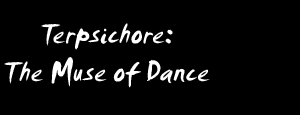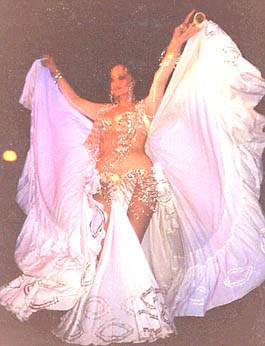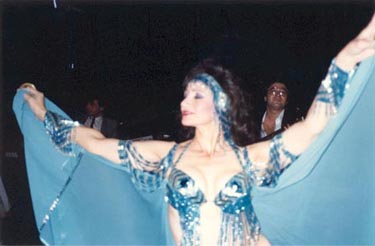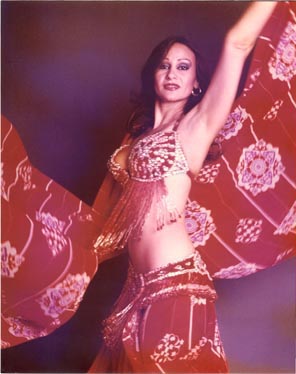|
|


By: Helena Vlahos Edited by her daughter: Daphne Papageorgiou
 Can you feel that? It reverberates from within your soul. It flutters in your heart. Listen. Feel. Rhythm. Music. It enters your psyche. It takes over your senses. You start to sway. You start to shimmy. The music takes hold of your body and mind. Your pulse beats with the sounds. Unleash. Now dance. Steps and motions, learned throughout the years emerge, now second nature. Lose your body to Terpsichore. She is in control. She is within you. She is moving all the right parts to the music. She is your psyche. Listen. Feel. Classical belly dance music? Khaleeji? Arabic pop? Feel them all. Do not worry, Terpsichore will know how to move to that heavy earthy drumbeat. She will guide your body through the soft billowing wail of the nay. She will unleash your instincts to the seductive caress of the violin. She is the complete belly dancer. She is you. Can you feel that? It reverberates from within your soul. It flutters in your heart. Listen. Feel. Rhythm. Music. It enters your psyche. It takes over your senses. You start to sway. You start to shimmy. The music takes hold of your body and mind. Your pulse beats with the sounds. Unleash. Now dance. Steps and motions, learned throughout the years emerge, now second nature. Lose your body to Terpsichore. She is in control. She is within you. She is moving all the right parts to the music. She is your psyche. Listen. Feel. Classical belly dance music? Khaleeji? Arabic pop? Feel them all. Do not worry, Terpsichore will know how to move to that heavy earthy drumbeat. She will guide your body through the soft billowing wail of the nay. She will unleash your instincts to the seductive caress of the violin. She is the complete belly dancer. She is you.
The Belly Dance
(Known as Raqs Sharqi in the Middle East)
Origin
No one knows the true origin of belly dancing, though it may be as old as woman herself. Primitive rock engravings of fertility dances date back as far as 15,000 B.C. Women in positions resembling the belly dance appear in Egyptian tomb paintings (5,000 B.C.) and in ancient Greek and Indian sculpture. Ritual dances of high priestesses of many ancient civilizations were probably some form of belly dance.
 Many countries have claimed the belly dance as their own. Certainly it has origins in the Middle Eastern cultures, with different styles from Arabia, Turkey, Greece and Iran. Many countries have claimed the belly dance as their own. Certainly it has origins in the Middle Eastern cultures, with different styles from Arabia, Turkey, Greece and Iran.
Throughout the centuries different countries and cultures have used the belly dance for varying purposes. The Awalem are dancers who perform at weddings for the purpose of sexual instruction. In Northern Africa young women would dance for coins which they sewed to their costumes. Their costumes then became their dowry. For many centuries belly dancing was considered a sacred dance and was performed in religious rites. The dance symbolizes childbirth. There are many stories of women performing the belly dance as an aid to other women in labor.
Belly dancing was introduced to the United States in 1893 at the Midway Plaisance exhibit of the Chicago Fair. Sol Bloom had previously purchased rights to an Algerian village which he had seen perform in Paris, and when Mr. Bloom became manager of the Midway he included the Algerians in the exhibit. The ballet troupe of the village performed a specialty called dance du ventre -- *dance of the stomach* or *belly dance*. Mr. Bloom described the dance as *a masterpiece of rhythm and beauty; ...choreographic perfection,...* (Dance Perspectives,p. 16). However , some people felt the dance was vulgar and indecent and complained to the exposition*s directors. This only served to stir up interest and crowds of people came to see the dance.
The Dance and Dancer
 Life begins in the belly. From the sexual act to conception, to birth, the center of activity and emotion is the belly. The belly dancer tells us this. Though she remains relatively stationary, she is always in motion. Undulating, twirling, shimmying and swaying, she can express the range of human emotion with dignity and grace. She dances to show the beauty of the female form, to interpret the mood of the music, to fascinate her audience. Life begins in the belly. From the sexual act to conception, to birth, the center of activity and emotion is the belly. The belly dancer tells us this. Though she remains relatively stationary, she is always in motion. Undulating, twirling, shimmying and swaying, she can express the range of human emotion with dignity and grace. She dances to show the beauty of the female form, to interpret the mood of the music, to fascinate her audience.
To express herself well, a belly dancer needs a certain amount of concentration and discipline. She must be able to coordinate her mind with an agile body. As far back as the ninth century, a great belly dancer was defined to Caliph Mu' tamid as one who had "loose joints and a great agility in twirling and swaying her hips" (Dance Perspectives, pgs. 7, 8,).
The dance itself employs several different rhythms and follows a specific, though not rigid pattern. The dancer begins with a short introduction, which brings her on stage. Her veil is on. She begins a series of fast movements in 2/4 or 4/4 rhythm and then may either stop and assume a posture, or blend into the next part of the dance. This part can either be a Chifte- telli or a Bolero. It is slow and rhythmic. Here the dancer performs all her snaky movements such as "around the world", "sway" and "snake arms". She will remove and work with her veil, finally casting it aside.
Now the dance picks up speed and the dancer performs fast hip bumps, twirls and turns. Gradually, she slows, lowering herself to the floor. Floor work consists of slow, undulating movements. Bolero or Chifte-telli may be used for her floor work depending on which was used earlier in the dance.
The dancer then rises to the rhythm of solo drums, executing shimmies, shakes, and hip bumps. Her dance is nearly complete. Once again the dance gains speed, allowing her to execute a fast and lively finale.
If the dancer has expressed herself well, she leaves her audience awed at her ability to control her body, and intrigued by her mystery.
|




Can you feel that? It reverberates from within your soul. It flutters in your heart. Listen. Feel. Rhythm. Music. It enters your psyche. It takes over your senses. You start to sway. You start to shimmy. The music takes hold of your body and mind. Your pulse beats with the sounds. Unleash. Now dance. Steps and motions, learned throughout the years emerge, now second nature. Lose your body to Terpsichore. She is in control. She is within you. She is moving all the right parts to the music. She is your psyche. Listen. Feel. Classical belly dance music? Khaleeji? Arabic pop? Feel them all. Do not worry, Terpsichore will know how to move to that heavy earthy drumbeat. She will guide your body through the soft billowing wail of the nay. She will unleash your instincts to the seductive caress of the violin. She is the complete belly dancer. She is you.
Many countries have claimed the belly dance as their own. Certainly it has origins in the Middle Eastern cultures, with different styles from Arabia, Turkey, Greece and Iran.
Life begins in the belly. From the sexual act to conception, to birth, the center of activity and emotion is the belly. The belly dancer tells us this. Though she remains relatively stationary, she is always in motion. Undulating, twirling, shimmying and swaying, she can express the range of human emotion with dignity and grace. She dances to show the beauty of the female form, to interpret the mood of the music, to fascinate her audience.
